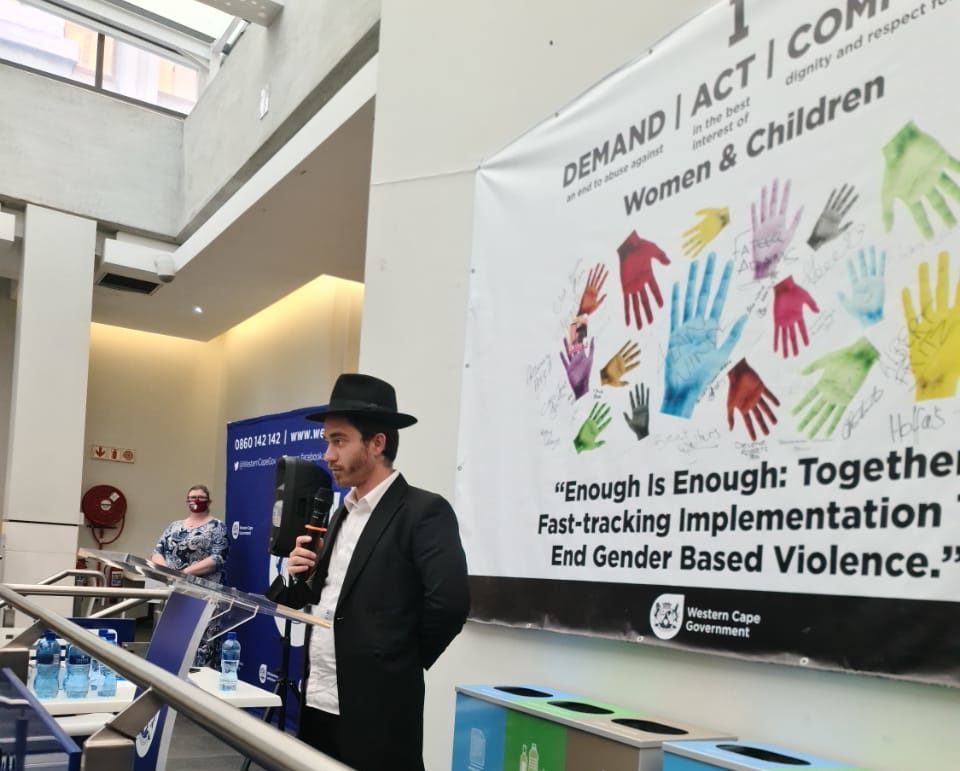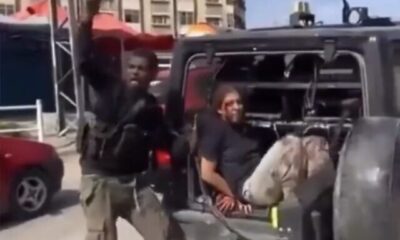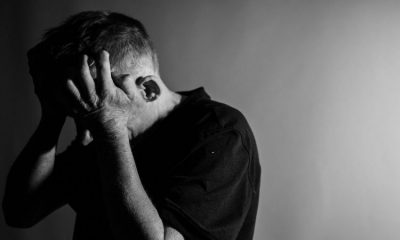
Community

Rabbonim called on to recognise GBV in Torah
Published
2 years agoon
The scourge of gender-based violence (GBV) is as pervasive in the Jewish community as it is elsewhere. Because of this, the Union of Jewish Women (UJW) Cape Town and the Commonwealth Jewish Women’s Network (CJWN) have asked rabbis to help fight it by addressing the matter with their congregations. It’s rare that the GBV that occurs in the Torah is ever discussed.
The women’s organisations recently called on Chief Rabbi Dr Warren Goldstein and all rabbonim to share the story of Dinah at this time. The United Nations has designated 25 November to 10 December 2021 as 16 Days of Activism against Gender-Based Violence, and the women hope that addressing the rape of Dinah, which took place in a recent parsha would highlight the need for activism.
Dinah was the daughter of Jacob and Leah. In Parashat Vayishlach, Dinah is abducted and raped. “Shechem saw her; and he abducted her, lay with her and afflicted her” (Genesis 34:1-2).
“The rape of Dinah is a very difficult and complicated story,” explains local Jewish educator Adina Roth. “She is raped by the prince of Shechem and then her brothers mount a vengeance campaign against the people of Shechem, massacring everyone.
“What’s really disturbing is that Dinah’s voice is excised from the story. Her only moment of agency in the story is at its opening, when she ‘goes out to visit the daughters of the land’. It’s during this ‘going out’ that the rape happens. ‘Going out to visit’ is an unusual sentence in the Torah. It’s suggesting that she was sociable and curious about life, meeting other people and stepping beyond the tent, which was often the circumscribed space for women in the Bible.
“The story subtly suggests that her going out is what puts her in danger, leading to the implication that she’s partially to blame for what ensues. This narrative is enforced by some commentaries that suggest that Dinah exposed herself by showing her arms, or that she was like her mother Leah who also ‘went out’ of the tent to claim her husband Yaakov. So sadly the commentaries end up assigning blame to Dinah and perpetuating myths that women somehow ask for it,” says Roth.
Karen Kallman of the UJW Cape Town echoes this sentiment. “‘What was she wearing? Why was she out so late? Did she provoke him?’ are what is implied. The ‘16 Days’ is a fantastic opportunity to have conversations about respect, equality, and the role we can play in helping to end violence,” she said.
Ilona Lee of the CJWN says, “Dinah has no voice in this parsha. In what ways are women silenced in our world today?” She elaborates on questions that could follow from reading the parsha. “What does respect look like in a relationship? What are some of the expectations we have of men and women in society? What are the impacts of blaming victims of violence?”
Roth also points out that the rape of Dinah was not the only instance of GBV in the Torah. “One of David’s sons, Amnon, rapes his sister Tamar in a very disturbing story. It’s clear that she resists and begs him to leave her alone,” says Roth. “After the rape she cries and tears her clothes. Her utter distress is recorded in the Tanach. Thereafter we don’t see her again. What happened to her?” While that question cannot be answered, the community of today can ensure that women do not disappear from our narrative.
“What’s [also] important is that in this story it’s an Israelite assaulting her. It’s important to realise [that] we need to take responsibility for what happens in our Jewish communities, and for the patriarchy, abuse, and misogyny that comes from within,” said Roth.
Goldstein responded positively to the initiative, writing to rabbonim on 18 November. “I believe we have a responsibility to support this important message and lend our voice to the issues raised by the campaign. The UJW in Johannesburg has written to me to suggest we harness the collective influence of all our rabbis, and that we speak about the issue of abuse during our shul droshas and shiurim this Shabbos. As difficult as this subject is, I believe we need to address it head on. As leaders we can use our influence to bring these issues out into the open, and galvanise our communities to deal with them.”
Rabbi Osher Feldman of the Gardens Shul in Cape Town was one rabbi who joined the campaign. His Shabbos drosha on 19 November was entitled ‘What type of man are you? A protest against gender-based violence’. In the sermon, he stressed that GBV was not just something ‘out there’ but sadly very much alive in our communities. “The true definition of strength and power is not in our control over others, but in our control over ourselves. As Pirkei Avot puts it, ‘Who is strong? He who controls his own inclinations,’” he said.
Also in Cape Town on 25 November, the Western Cape government invited faith leaders to light candles in honour of those who had lost their lives to GBV. The Jewish community was represented by Rabbi Nissen Goldman.
Writing about this on Facebook, Goldman said, “Today I had the privilege and responsibility of addressing the Western Cape government as they launched the 16 Days of Activism campaign. They lit candles, and I doubt anyone realised it at the time, but the way each speaker placed their candle ended up forming a menorah.
“I thought it was a message for the occasion. GBV doesn’t just happen. Like most things, it doesn’t exist in a vacuum.” While not excusing the behaviour, he noted, “We need to be asking ourselves why this man felt the need to do this. Men are hurting others because they have been deeply hurt. And this is what needs to be addressed: trauma, from as early on as possible. This is where the menorah comes in. Its message is clear. ‘I reflect you. Look inside! The world needs you and your light, now go shine.’ If only men were taught that.”










